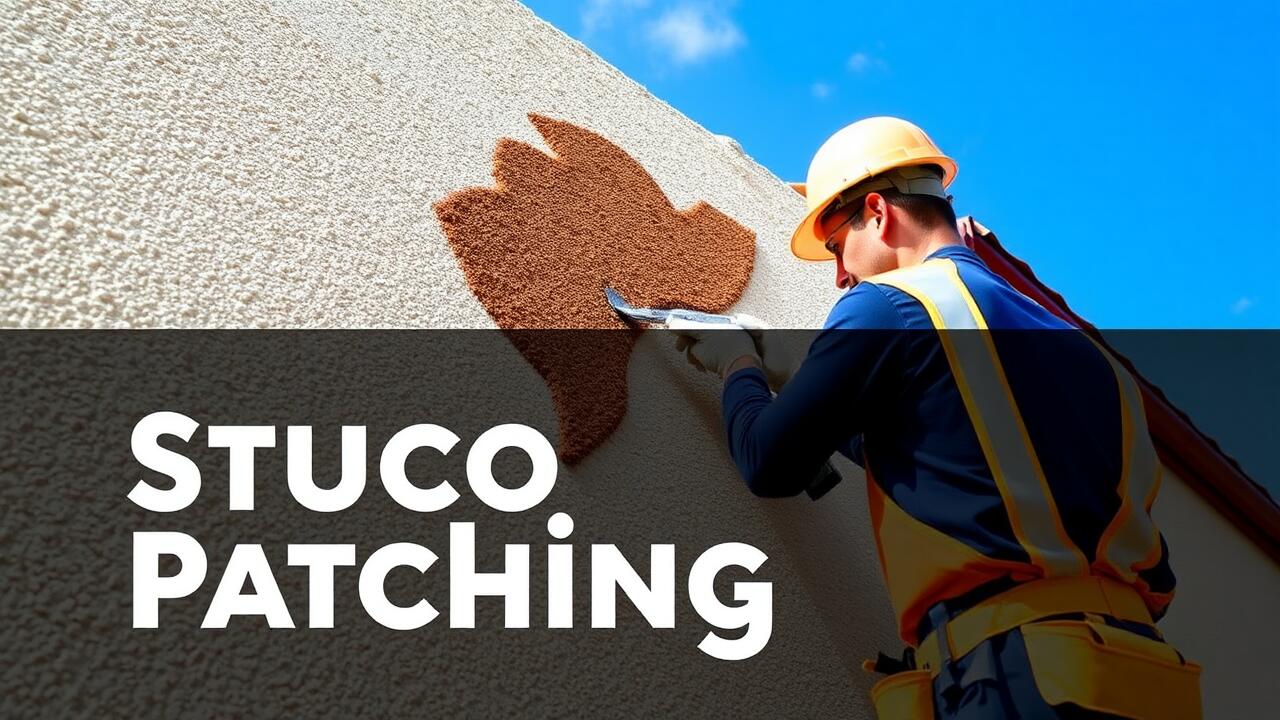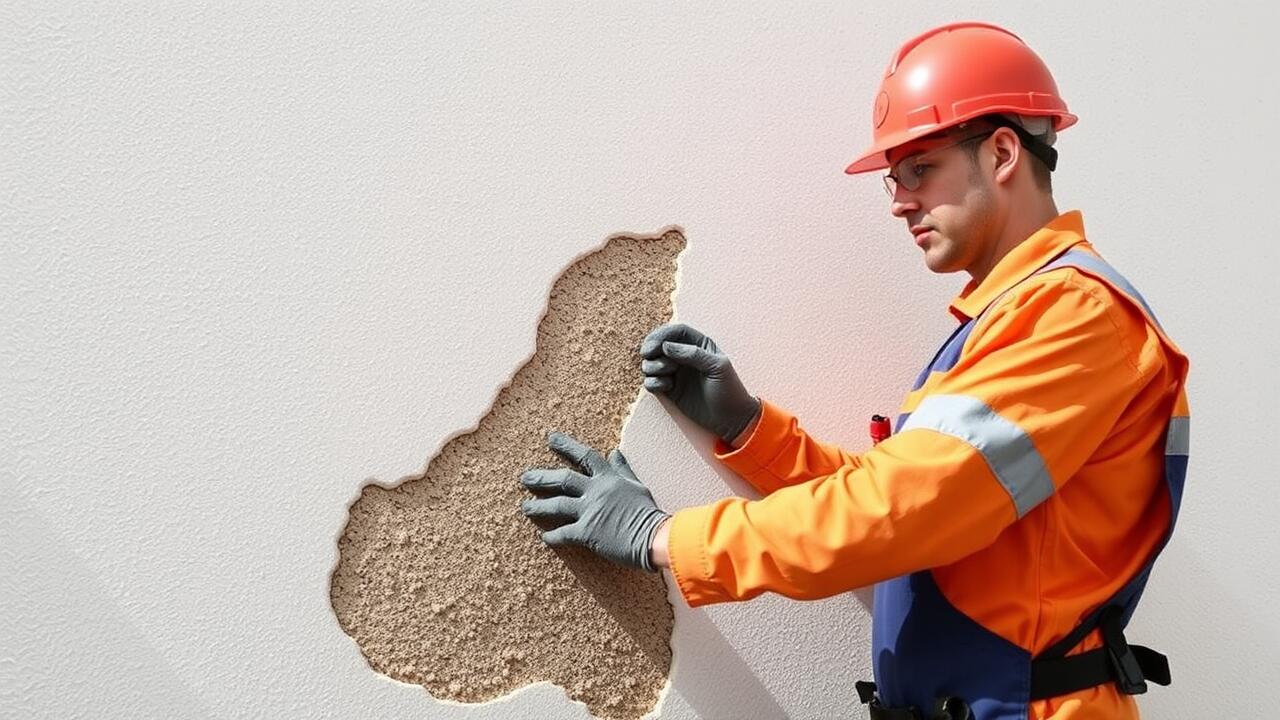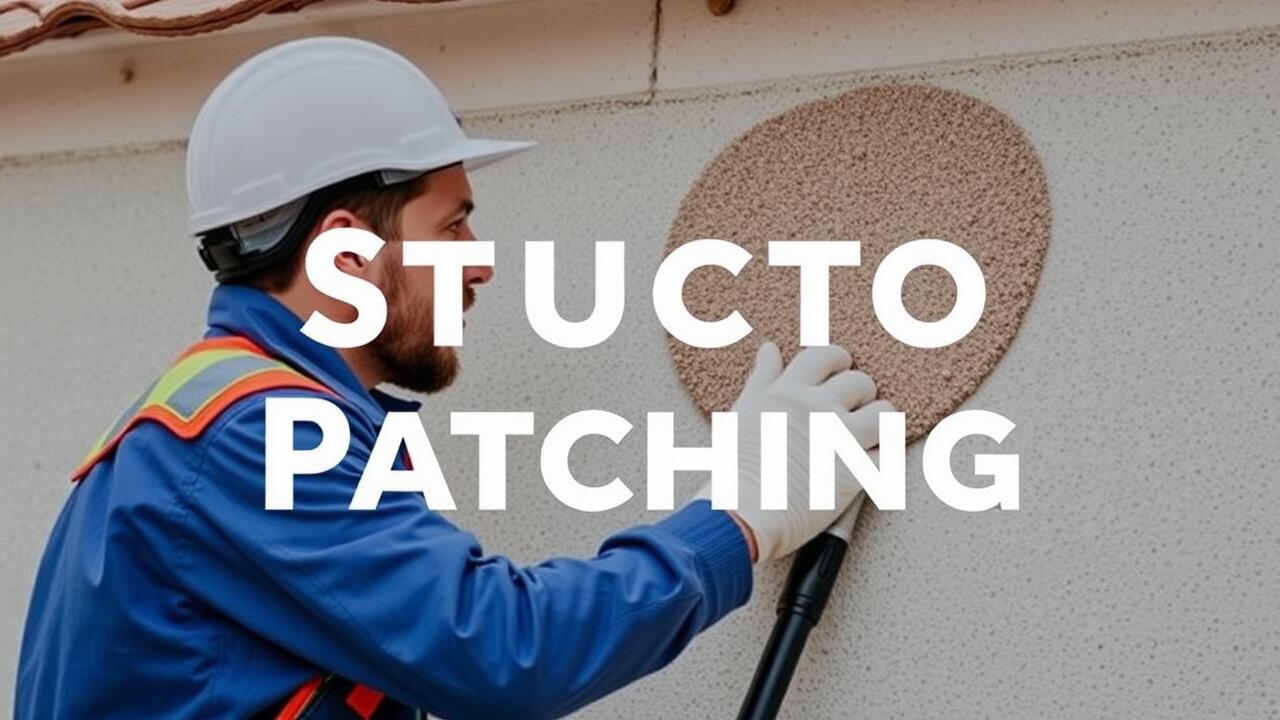
Tools Required for Stucco Application
To undertake a successful stucco application, it's essential to gather the right tools. You will need a trowel for applying and smoothing the stucco mix. A hawk can help hold the stucco while you work, allowing for a more efficient application process. Additionally, a mixing drill is important for preparing the stucco correctly, ensuring that the consistency is just right for easy application. For those interested in professional results, tools like a stucco sprayer can achieve a textured finish, adding visual appeal.
For projects like Stucco Patching in Palms, Los Angeles, it is vital to have protective gear, including gloves and goggles, to safeguard yourself from any splatters or dust. A level can ensure that your application remains even and flat. Using a sponge or brush allows for fine-tuning, making it easier to achieve the desired finish on the surface. Having a ladder might also come in handy for reaching higher areas that need attention.
Essential Equipment You’ll Need
When preparing to apply stucco over existing stucco, having the right tools and equipment is essential for achieving a smooth finish. A trowel is a fundamental tool, allowing for precise application and smooth spreading of the stucco mix. Additionally, a hawk can help hold the stucco while you work, keeping your hands free. A margin trowel is also useful for small areas and corners, ensuring that every detail is addressed during the application. For those engaged in stucco patching in West Adams, Los Angeles, these tools will help ensure a seamless integration with the existing surface.
In addition to hand tools, it's important to have safety gear. Gloves will protect your hands from the rough texture and any chemicals in the stucco mix, while safety goggles shield your eyes from dust and debris. A sturdy ladder may be necessary for reaching elevated areas as you apply the new layer of stucco. Using a mixing bucket helps to prepare the stucco mix to the correct consistency. All of these pieces of equipment are crucial for a successful application, especially in projects involving stucco patching in West Adams, Los Angeles.
Step-by-Step Application Process
Before starting the application process, ensure the existing stucco surface is clean and free of loose paint or debris. Pressure washing can be an effective way to prepare the surface, removing any dust or grime. Once the area is prepped, apply a bonding agent to help the new layer adhere properly. The bonding agent creates a chemical bond, which is crucial for the longevity of the stucco. If you are considering higher-quality results, look for professional services in the area, such as those specializing in Stucco Patching in Palms, Los Angeles.
After the bonding agent has dried, you can begin applying the new stucco. Start by mixing your stucco according to the manufacturer’s instructions. Use a trowel or a hawk to apply the first coat evenly across the surface. Aim for a thickness of about 3/8 inch, making sure it covers all areas without sagging or dripping. Once the first coat is applied, allow it to cure slightly before adding additional coats. For the best results, follow guidelines for perfect application, ensuring each layer is applied smoothly and adequately before moving on to the next.
Guidelines for Perfect Application
Achieving a perfect application of stucco requires careful attention to detail and adherence to established guidelines. Begin by ensuring the existing surface is clean and free of debris. Repair any cracks or damage in the old stucco to create a smooth base. This preparation is crucial for good adhesion. When applying the new layer, use a trowel to spread the stucco evenly, maintaining a consistent thickness to avoid weak spots.
Monitoring the conditions during application is essential. The ambient temperature and humidity can affect the curing process. For optimal results, aim to apply stucco during moderate weather conditions. In regions like Palms, Los Angeles, where temperatures can vary, pay close attention to the forecast. Following these practices will help achieve a stable and visually appealing finish. Stucco patching in Palms, Los Angeles, can be particularly rewarding when done correctly, enhancing both aesthetics and durability.
Curing and Finishing the Stucco
Curing is a critical phase in the stucco application process that ensures the longevity and durability of the finish. Proper curing helps to control moisture loss, allowing the stucco to harden evenly. It is essential to keep the surface adequately moist during the initial curing period, which typically lasts for several days. This can be achieved by lightly misting the surface with water or using wet burlap to cover the stucco. Especially in arid regions like Palms, Los Angeles, where evaporation rates can be high, maintaining moisture is vital to avoid cracks and ensure a solid bond.
Once the curing process is complete, attention turns to finishing the stucco to achieve the desired aesthetic. This may involve applying a finishing coat or texture. The final touches can significantly enhance the visual appeal and protect the structure from weather elements. In Palms, Los Angeles, homeowners often consider various finishes that complement the local architectural style. Proper finishing not only contributes to the beauty of the home but also increases its market value, making it an essential step in any stucco project.
Importance of Proper Curing
Proper curing is crucial for the longevity and durability of stucco. This process allows the material to set correctly, enhancing its adhesion and structural strength. Insufficient curing can lead to cracking and peeling, compromising the integrity of the stucco application. Timely moisture retention is vital during the initial curing phase to ensure that the stucco bonds effectively with the surface beneath.
For those undertaking projects such as stucco patching in Palms, Los Angeles, understanding the impact of environmental conditions on curing is essential. Factors like temperature, humidity, and wind can all influence how quickly stucco dries. Taking precautions, such as covering the newly applied stucco with plastic sheeting or periodically misting it with water, can significantly improve its final appearance and performance.
FAQS
Can you put stucco over existing stucco?
Yes, you can put stucco over existing stucco, provided that the old surface is in good condition and properly prepared.
What preparation is needed before applying new stucco over old stucco?
Before applying new stucco, ensure the existing stucco is clean, free of any loose material, and properly repaired. You may also need to apply a bonding agent for better adhesion.
Are there any restrictions on the type of stucco that can be applied over existing stucco?
It's generally recommended to use the same type of stucco mix as the existing material. However, if you're switching types, consult with a professional to ensure compatibility.
How long does the new stucco need to cure after application?
The curing time can vary, but typically, new stucco should be kept moist for at least 48 hours and may take up to 28 days to fully cure, depending on environmental conditions.
Is it necessary to hire a professional to apply stucco over existing stucco?
While some homeowners may choose to do it themselves, hiring a professional is advisable if you are unfamiliar with stucco application techniques or if the project is large in scale.


